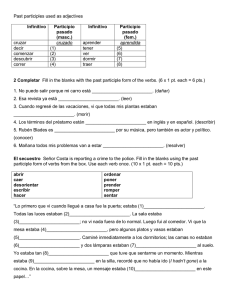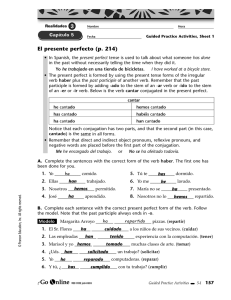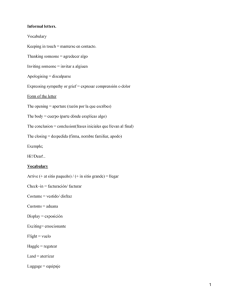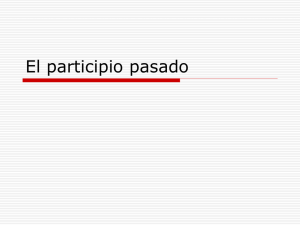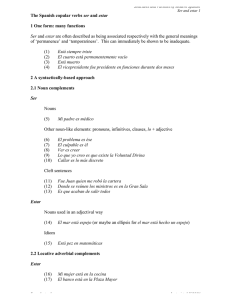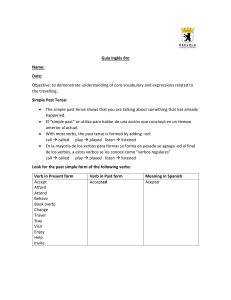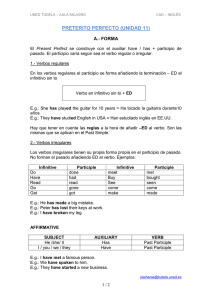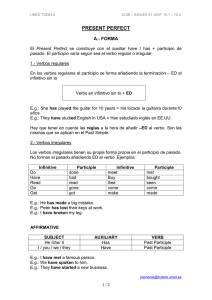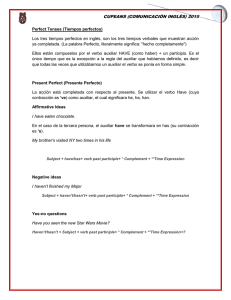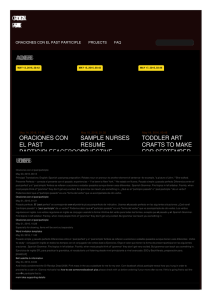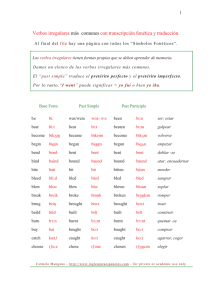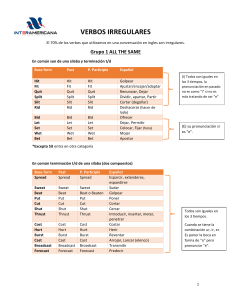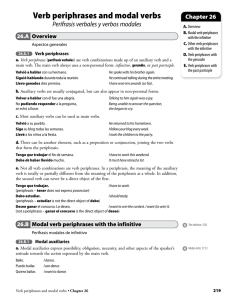Estar + participio (p. 79) creado
Anuncio
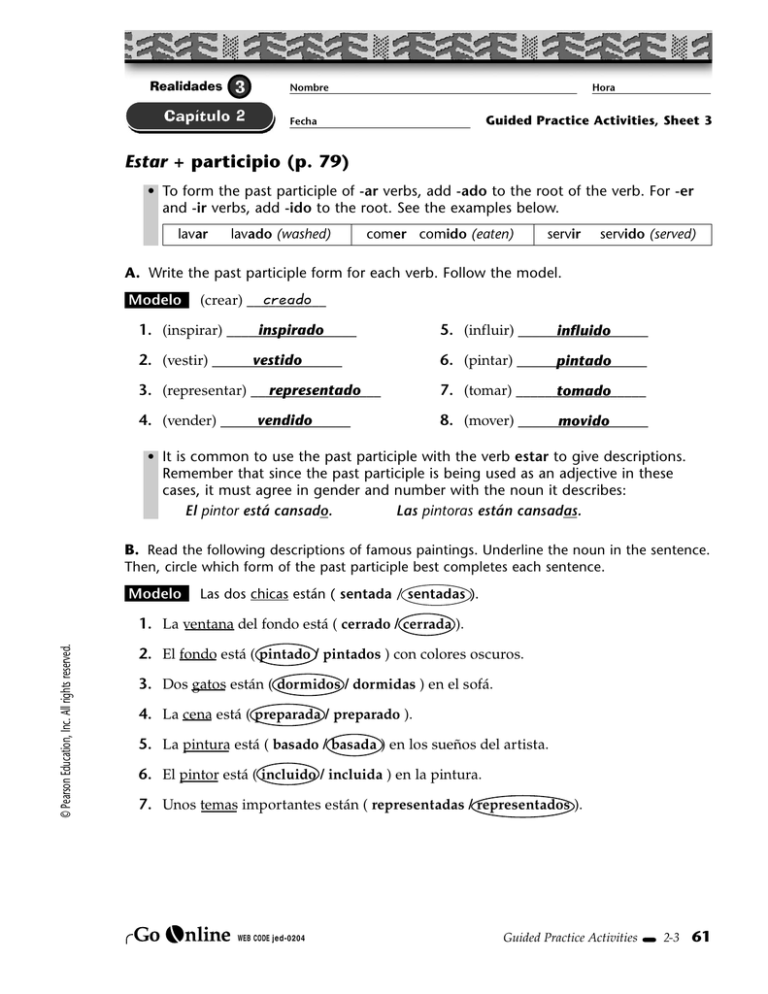
Realidades Nombre Hora Guided Practice Activities, Sheet 3 Fecha Estar + participio (p. 79) • To form the past participle of -ar verbs, add -ado to the root of the verb. For -er and -ir verbs, add -ido to the root. See the examples below. lavar lavado (washed) comer comido (eaten) servir servido (served) A. Write the past participle form for each verb. Follow the model. Modelo: creado (crear) ___________ 1. (inspirar) __________________ inspirado 5. (influir) __________________ influido 2. (vestir) __________________ vestido 6. (pintar) __________________ pintado 3. (representar) __________________ representado 7. (tomar) __________________ tomado 4. (vender) __________________ vendido 8. (mover) __________________ movido • It is common to use the past participle with the verb estar to give descriptions. Remember that since the past participle is being used as an adjective in these cases, it must agree in gender and number with the noun it describes: El pintor está cansado. Las pintoras están cansadas. B. Read the following descriptions of famous paintings. Underline the noun in the sentence. Then, circle which form of the past participle best completes each sentence. Modelo: Las dos chicas están ( sentada / sentadas ). © Pearson Education, Inc. All rights reserved. 1. La ventana del fondo está ( cerrado / cerrada ). 2. El fondo está ( pintado / pintados ) con colores oscuros. 3. Dos gatos están ( dormidos / dormidas ) en el sofá. 4. La cena está ( preparada / preparado ). 5. La pintura está ( basado / basada ) en los sueños del artista. 6. El pintor está ( incluido / incluida ) en la pintura. 7. Unos temas importantes están ( representadas / representados ). WEB CODE jed- 0204 Guided Practice Activities 2-3 61 Realidades Nombre Hora Guided Practice Activities, Sheet 4 Fecha • Some verbs have irregular past participles. Look at the list below: poner: puesto decir: dicho hacer: hecho escribir: escrito ver: visto abrir: abierto morir: muerto romper: roto volver: vuelto resolver: resuelto C. Read the following description of an artist’s workshop. First, write the past participle of the verb in parentheses. Next, complete the sentences with the correct form of this past participle. Be careful to make its ending match the noun in the sentence in number and gender. Modelo: puestas ( poner __________ puesto ) Cuando entré en el taller, las luces no estaban __________. abierto ) La ventana estaba ____________ abierta y hacía frío. 1. (abrir ____________ rota roto 2. (romper ____________ ) Una pintura grande estaba ____________ en el suelo. puesto puestos en la mesa. 3. (poner ____________ ) Los pinceles y la paleta estaban ____________ escrito escritas en el 4. (escribir ____________ ) Unas notas para pinturas futuras estaban ____________ cuaderno del artista. hecho hecha 5. (hacer ____________ ) Una escultura de un animal estaba ____________ 6. (morir ____________ ) Un ratón estaba ____________ en el taller. ¡Qué horror! muerto muerto D. The classroom was a mess when the students arrived Monday morning. Use the verbs in parentheses to write a sentence using estar + past participle. Follow the model. Modelo: Las ventanas _______________ _______________ (abrir). estaban abiertas 2. Las paletas _______________ _______________ (poner) en el suelo. estaban puestas 3. Las botellas de agua de la maestra _______________ _______________ (beber). estaban bebidas 4. La computadora _______________ _______________ (romper). estaba rota 5. Los libros de texto _______________ _______________ (perder). estaban perdidos 6. Unos insectos habían entrado por la ventana y _______________ _______________ estaban muertos (morir) en el suelo. 62 Guided Practice Activities 2-4 WEB CODE jed- 0204 © Pearson Education, Inc. All rights reserved. 1. Unas palabras _______________ _______________ (escribir) en la pared. estaban escritas
